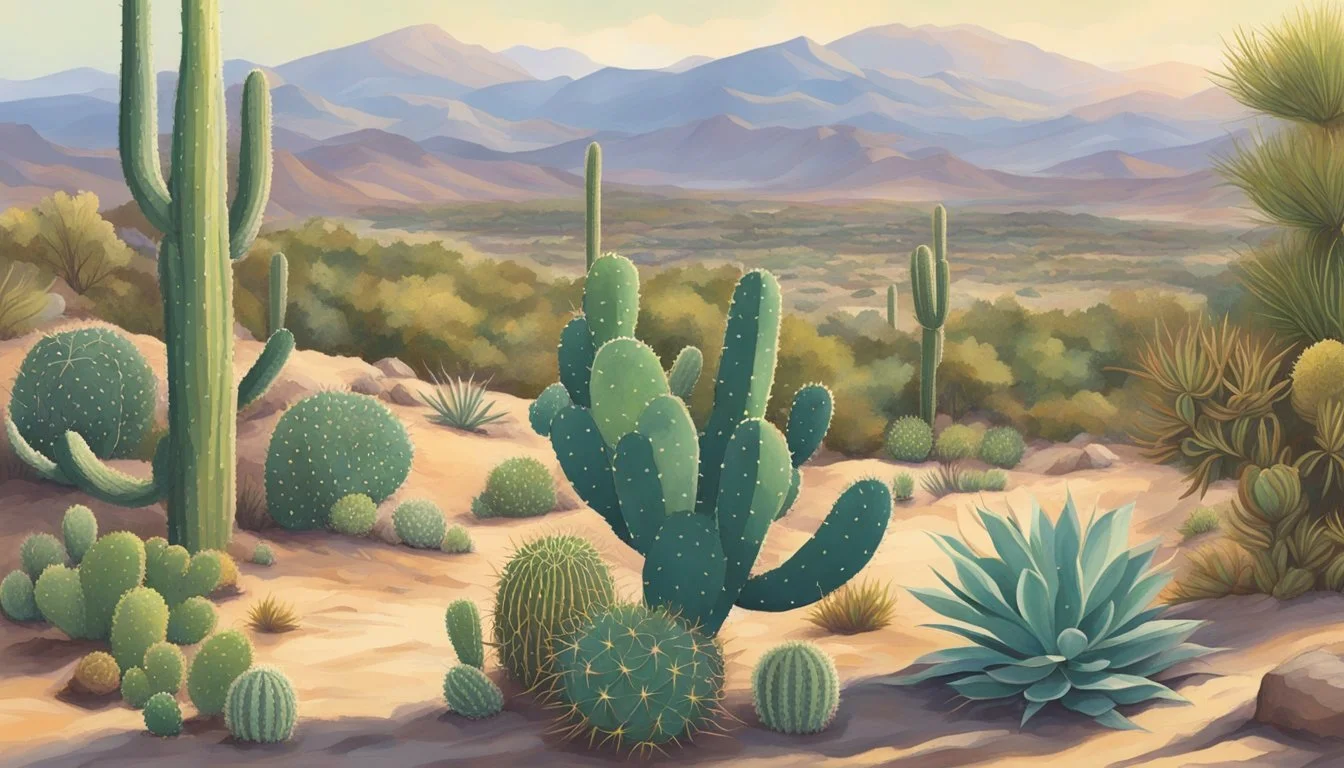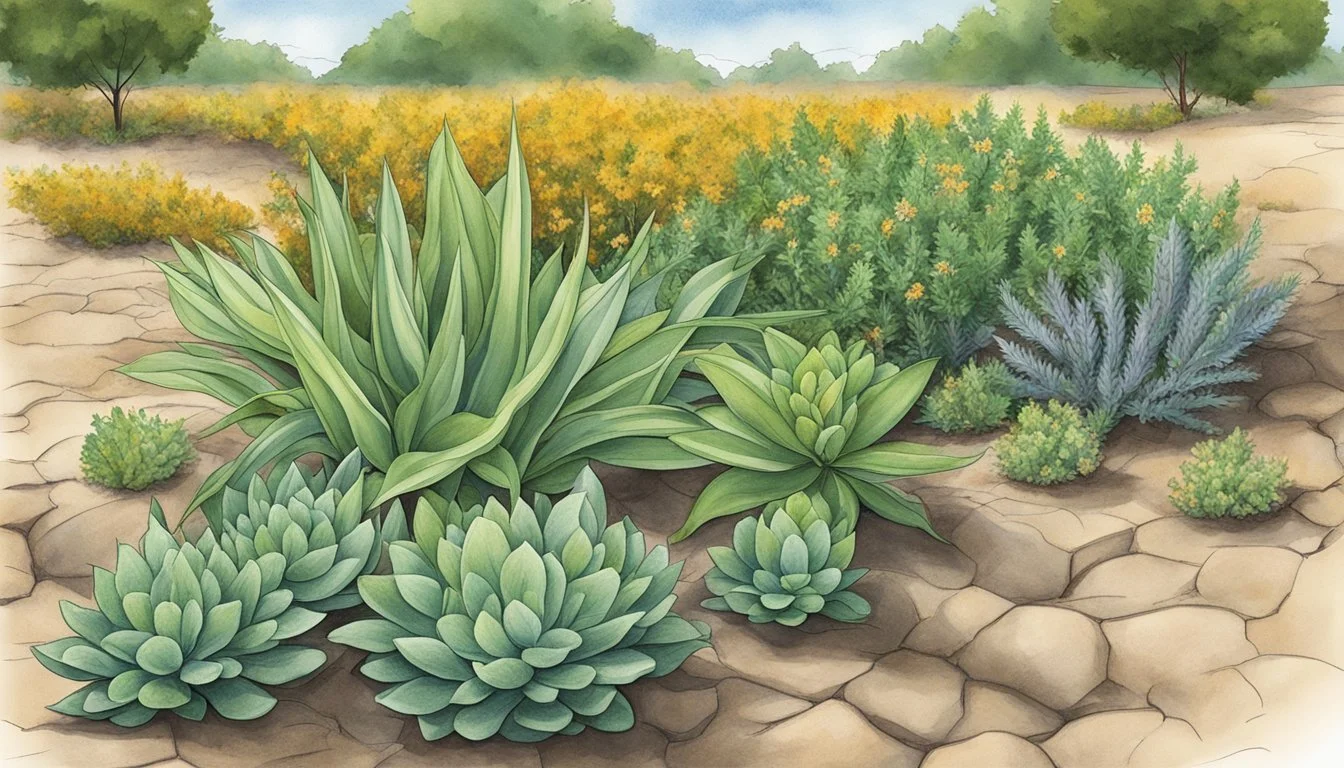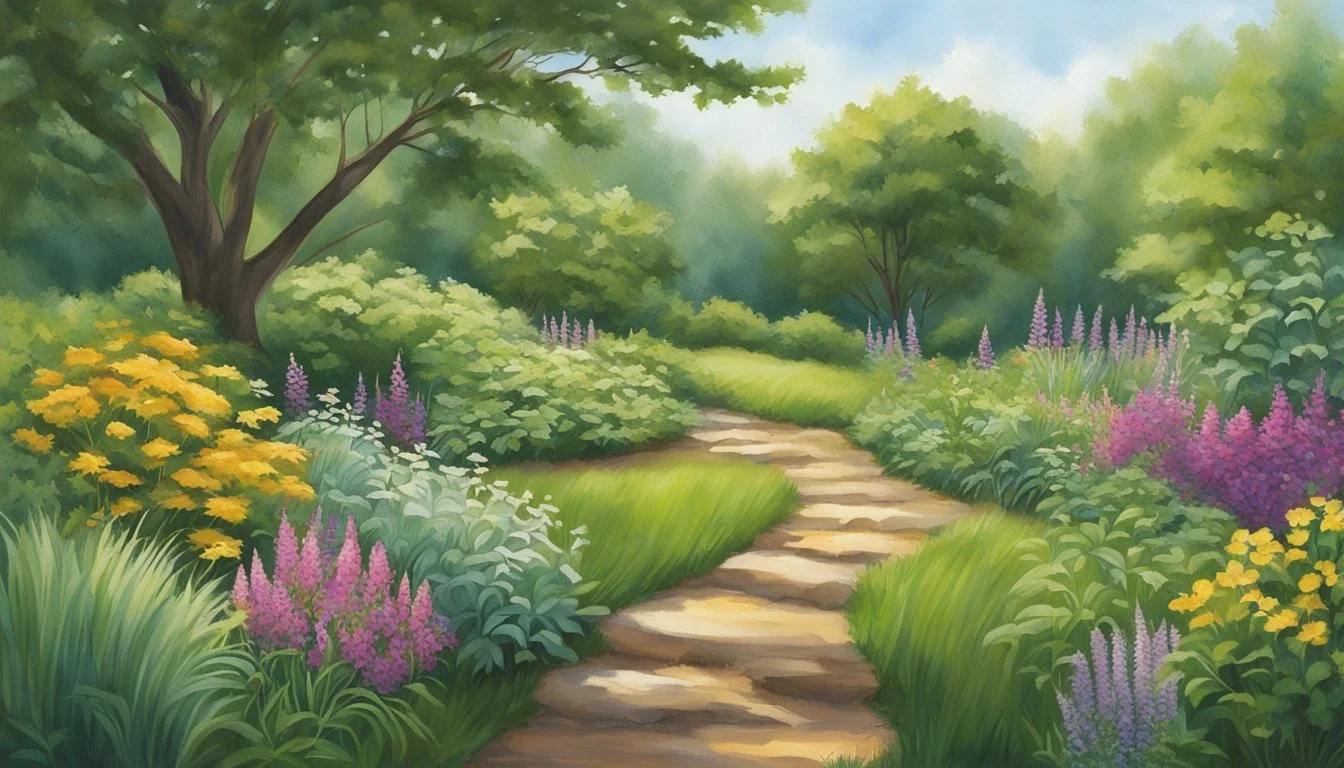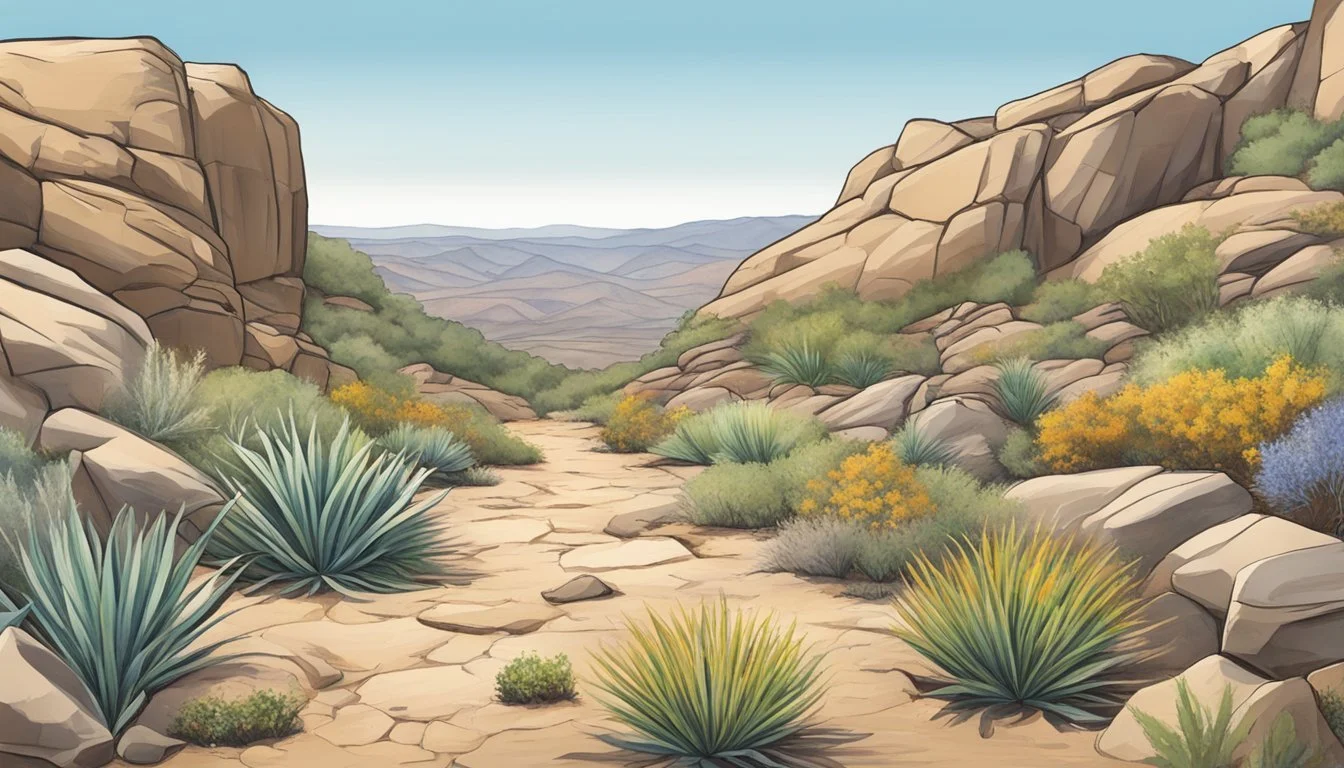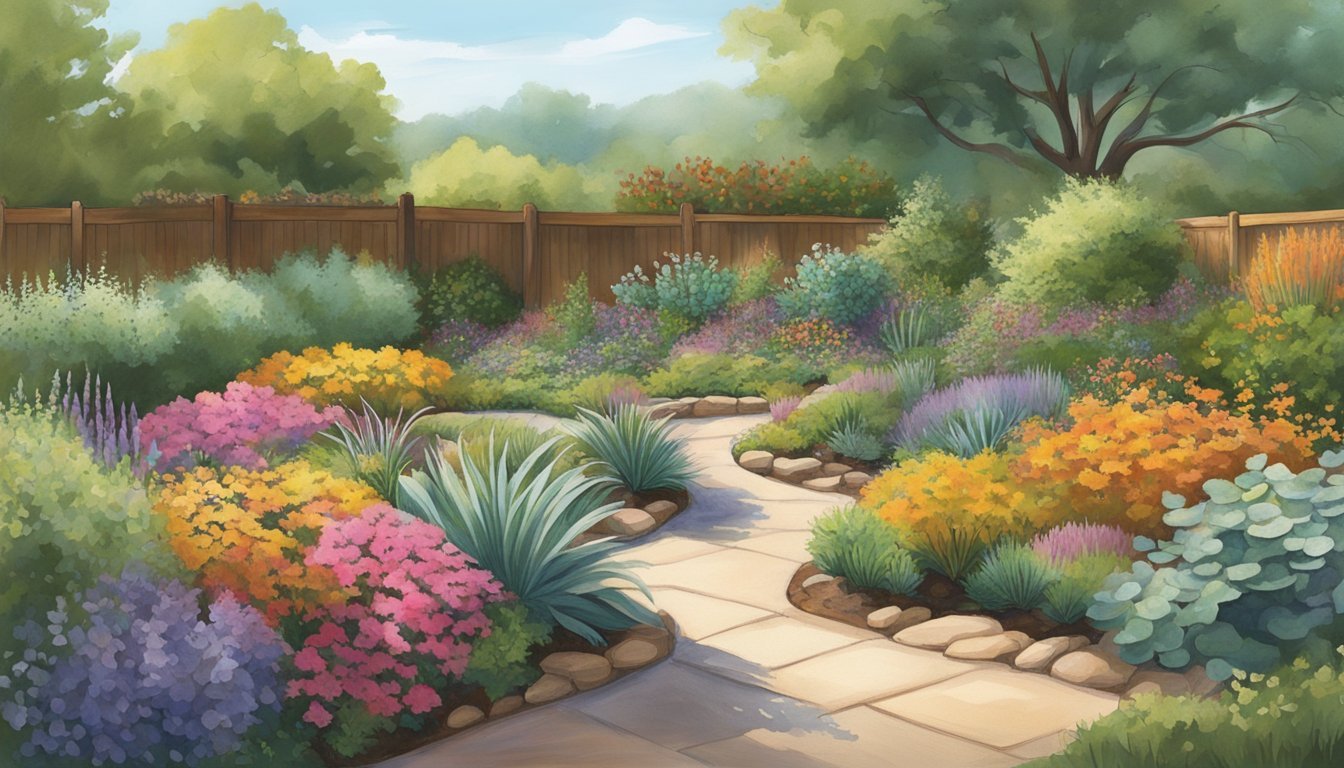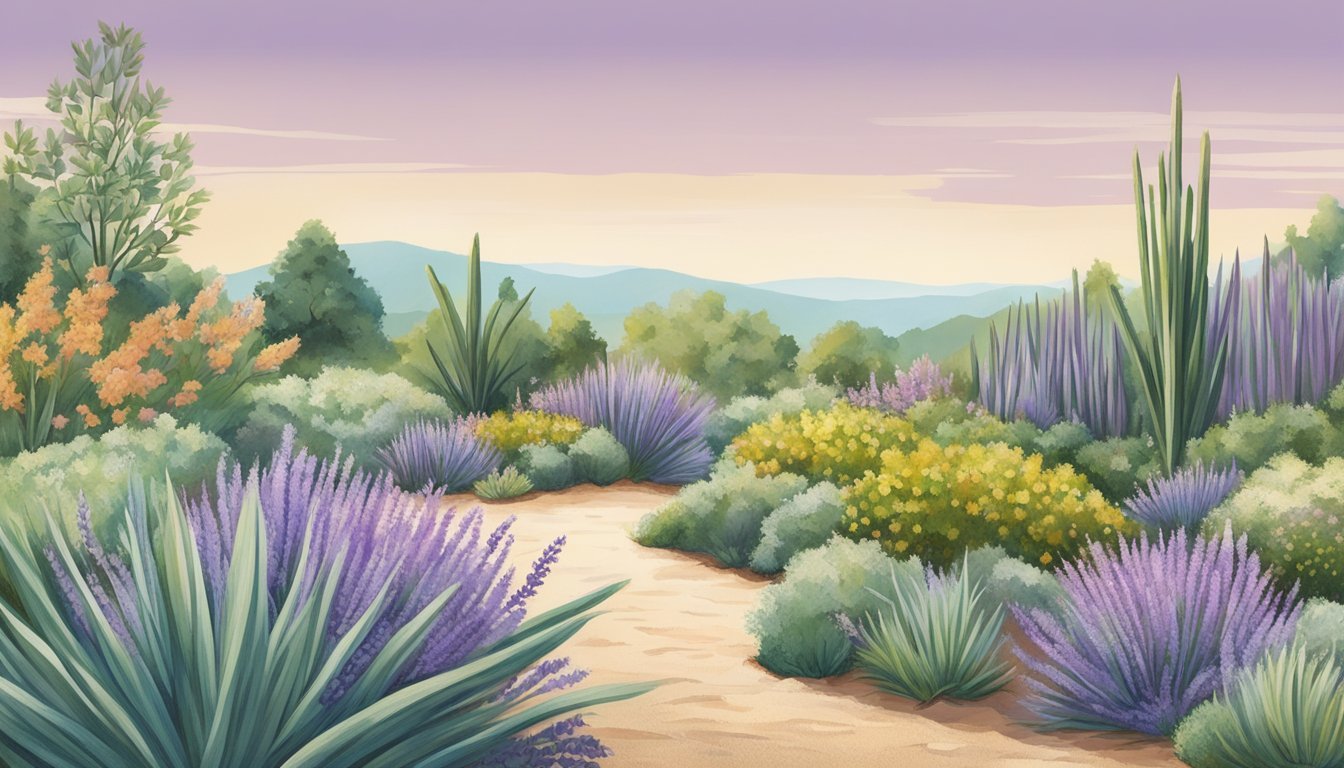Drought-Tolerant Plants in Virginia
Thriving Species and Landscaping Tips
Drought-tolerant plants are becoming increasingly important in Virginia's landscaping due to fluctuating weather patterns and the need for water conservation. Many gardeners and homeowners are seeking out species that can thrive with minimal water, reducing the reliance on irrigation and preserving valuable resources. This focus on hardy plants not only ensures the sustainability of local gardens but also supports the state's diverse ecosystem by incorporating plants well-adapted to Virginia’s climate.
Native plants, in particular, have evolved to endure the local conditions and often require less care than non-native species. Utilizing drought-tolerant natives provides multiple benefits, including resistance to local pests and diseases, and a better chance of survival during prolonged dry spells. Additionally, these plants can contribute to the environment by providing habitat and food sources for native wildlife.
Importance of Drought-Tolerant Plants in Virginia
In Virginia, where varying weather patterns and seasonal dry spells can impact the environment, incorporating drought-tolerant plants into the landscape is of significant importance. These plants are adapted to survive in conditions with limited water supply, making them invaluable during periods of drought.
Virginia native plants that are drought-tolerant contribute substantially to the ecosystem, as they require fewer resources and support local wildlife. For example, they provide essential habitat and food sources for Virginia's pollinators and other fauna. By including these species in conservation landscaping, homeowners and landscape designers actively support biodiversity and ecosystem health.
Moreover, drought-tolerant plants demand less maintenance and water than their conventional counterparts, which is not only convenient for the gardener but also supports water conservation efforts. This attribute also translates to potential cost savings in terms of water bills and landscaping expenses.
Advantages of Drought-Tolerant Plants
Ecosystem Support
Reduced Maintenance Needs
Water Conservation
Cost Savings
Governed by a robust knowledge of Virginia's climate and natural flora, gardening enthusiasts and landscape professionals are embracing the use of drought-tolerant species. The shift toward this type of landscaping, often referred to as xeriscaping, also serves as a proactive measure against the effects of climatic shifts, ensuring resilience and sustainability of local gardens and landscapes.
The integration of plants with high drought tolerance is not just an aesthetic choice but a strategic action for long-term environmental stewardship in Virginia. It reinforces the state's ability to manage its natural resources effectively while maintaining charming and resilient green spaces.
Understanding Drought and Its Impact
Drought strikes when rainfall is significantly below average, affecting various aspects of the natural and cultivated landscape. This section delves into the nature of drought and its phases, as well as the impact it has on ecological systems and human activity.
Defining Drought and Its Stages
Drought is a complex climatic event characterized by a prolonged period of insufficient rainfall. It can be classified into four stages:
Mild Drought: This initial stage involves a noticeable deficit in precipitation, leading to reduced soil moisture and stream flow.
Moderate Drought: At this point, water reserves continue to deplete, and vegetation begins to exhibit stress.
Severe Drought: Significant water shortages are experienced, affecting water supplies, agriculture, and natural ecosystems.
Extreme Drought: The most acute stage, where water scarcity reaches critical levels, causing widespread damage to crops, wildlife, and the economic stability of affected regions.
Effects on the Landscape and Ecosystem
The absence of adequate rain during drought conditions leads to a series of ecological consequences:
Vegetation Stress: Plants, including drought tolerant species, experience reduced growth and productivity, with many unable to survive prolonged water stress.
Soil Degradation: Without moisture, soils can become compacted, lose nutrients, and are more susceptible to erosion, further impeding plant growth.
Ecosystem Disruption: Arid environments expand as drought persists, displacing species and altering food webs. Bodies of water shrink, affecting aquatic life and compromising water quality.
Irreversible damage to landscapes can occur if drought-resistant measures and changes in water use practices are not effectively implemented.
Native Drought-Tolerant Plants of Virginia
Virginia's diverse climate allows for a range of native drought-tolerant plants that beautify landscapes while conserving water. These plants are well-adapted to local conditions and provide essential habitats for wildlife.
Benefits of Native Plants
Native plants in Virginia require less maintenance, as they are well adapted to the local climate and soil conditions, thus fostering biodiversity and sustainability. They reduce the need for water, fertilizers, and pesticides, and support local ecosystems by providing food and shelter for wildlife.
Popular Native Drought-Tolerant Species
The following are some popular species of drought-tolerant plants native to Virginia:
Grasses: Little Bluestem (Schizachyrium scoparium), Switchgrass (Panicum virgatum)
Shrubs: American Holly (Ilex opaca), Wax Myrtle (Morella cerifera)
Perennials: Purple Coneflower (Echinacea purpurea), Mountain Mint (Pycnanthemum virginianum)
Trees: American Beech (Fagus grandifolia)
Ferns: New York Fern (Thelypteris noveboracensis)
These species can thrive with minimal supplemental watering once established, making them ideal for sustainable landscaping in Virginia.
Virginia Native Plant Society Recommendations
The Virginia Native Plant Society highlights a selection of species well-suited to the state's diverse environment. They recommend using local plants like Antennaria plantaginifolia for their adaptability to Virginia's varying conditions and their ecological benefits. Following their guidelines ensures that gardeners and landscapers choose plants that are both beneficial to the environment and appropriate for their specific region.
Drought-Tolerant Trees and Shrubs
Virginia's climate, with its dry summers, demands that gardeners consider drought-tolerant species for sustainable landscaping. This article provides a curated selection of trees and shrubs that thrive in these conditions without compromising the aesthetics of your garden.
Selection of Drought-Tolerant Trees
The careful selection of trees can greatly enhance a landscape's ability to withstand dry spells. Oaks (Quercus spp.) are an exemplary choice, with species like the White Oak (Quercus alba) and Willow Oak (Quercus phellos) known for their resilience to drought once established. Pines also offer both shade and drought tolerance, with the Eastern White Pine (Pinus strobus) being a popular pick for Virginia landscapes.
Recommended Drought-Tolerant Trees:
Oaks:
White Oak (Quercus alba)
Willow Oak (Quercus phellos)
Pines:
Eastern White Pine (Pinus strobus)
Each of these tree species has been chosen not only for their ability to endure prolonged dry periods but also for their ability to contribute to the local ecosystem's health.
Shrub Varieties for Water Conservation
Shrubs play an integral role in water conservation efforts through their adaptive qualities. Boxwood(Buxus spp.) and Hollies (Ilex spp.) are two such shrubs that have proven their worth in Virginia's drier gardens. Boxwood varieties, such as the common boxwood (Buxus sempervirens), can thrive with minimal watering, while hollies like the American Holly (Ilex opaca) maintain their vibrant foliage even when water is scarce.
Drought-Resistant Shrub Varieties:
Boxwood:
Common Boxwood (Buxus sempervirens)
Hollies:
American Holly (Ilex opaca)
These shrubs are not only valued for their drought tolerance but also for their ease of maintenance and the structure they provide to landscaping designs throughout the year.
Perennial Favorites and Grasses
In Virginia's climate, choosing the right plants is crucial for gardening success. This section focuses on perennials and ornamental grasses that thrive in dry conditions, ensuring maintained beauty with minimal watering.
Hardy Perennials for Dry Climates
Perennials are the backbone of drought-resistant gardens. Russian Sage (Salvia yangii), with its silvery foliage and lavender-blue spikes, stands out for its ability to withstand dry spells and attract pollinators. Liriope (Liriope muscari), also known as lilyturf, is another excellent choice, offering grass-like foliage and spiky purple flowers. Both plants are favored for their low water requirements and year-round interest.
Ornamental Grasses for Drought Resistance
Ornamental grasses can provide texture, movement, and color to a drought-tolerant landscape. They excel in poor, dry soils where other plants might struggle. For gardeners in Virginia, varieties like Pennisetum setaceum, also known as African Fountain Grass, provide spectacular brush-like flowers. Another superb option is the fine-textured blue fescue (Festuca glauca), which maintains its color even in the heat of summer. These grasses are not only resilient but also require minimal maintenance, making them a wise choice for water-wise gardens.
Gardening Techniques for Drought Tolerance
In Virginia, creating a drought-tolerant garden involves practices that enhance water conservation and plant survival during dry periods. It begins with soil preparation and extends to innovative irrigation methods and strategic plant placement.
Soil Preparation and Mulching
Preparing the soil with organic matter, like compost, increases its water retention capacity and provides nutrients to the plants. Mulching is crucial for reducing water loss, as a 3" to 4" layer of mulch over the soil can minimize evaporation. Materials such as bark, straw, or leaf mold are effective mulches for conserving soil moisture in gardens and landscaping.
Efficient Irrigation Practices
Utilizing efficient irrigation practices limits water waste and ensures that plants receive the right amount of moisture. Drip irrigation delivers water directly to the plant's root zone, where it's most needed. For plants with a deep tap root, an infrequent but deep watering schedule encourages roots to grow downward, seeking moisture from below. In contrast, plants with a rhizome or tuber system may benefit from a more regular but less deep watering pattern to maintain the upper soil layer's moisture.
Choosing the Right Plant Locations
Selecting the appropriate location is as crucial as the plant selection itself. Plants requiring full sun should be positioned in areas where they can receive unfiltered sunlight for most of the day, ensuring they thrive with less water. Additionally, using plants native to Virginia that are adapted to the region's rainfall patterns can reduce the need for supplemental watering. The knowledge shared by the Piedmont Master Gardeners can also guide the selection of perennials that possess drought-tolerant characteristics suitable for the area.
Landscape Design for Drought Management
Incorporating drought-resistant elements into landscape design is essential for sustaining a vibrant and environmentally conscious garden in Virginia's varied climate. By focusing on xeriscaping, alternative ground covers, and pollinator-friendly habitats, homeowners can achieve a resilient outdoor space.
Xeriscaping: The Basics
Xeriscaping is a landscaping philosophy that reduces or eliminates the need for supplemental water. It primarily involves selecting plants that are naturally adapted to local conditions. In Virginia, this means incorporating native species that thrive in the region's climate without extensive irrigation. Some drought-tolerant landscaping practices include grouping plants with similar water needs and utilizing efficient irrigation systems.
Mulch: Applying mulch conserves soil moisture and suppresses weeds.
Soil Preparation: Amending soil with compost improves water retention.
Native Plants: Integrating native grasses, shrubs, and trees aids in reducing water use.
Drought Tolerant Plants: Consider Virginia's native coneflowers, blazing stars, and black-eyed Susans, which are both drought-resistant and local to the area.
Ground Cover Alternatives
Traditional lawn grasses often require significant amounts of water. In contrast, ground cover alternatives can provide an attractive and sustainable solution.
Functional and Aesthetic: Ground covers such as creeping thyme and juniper can withstand dry conditions while adding textural diversity to the garden.
Mulch: Beyond plants, organic mulches, like wood chips or straw, are excellent for moisture retention and temperature regulation, as suggested in various drought-tolerant landscaping articles.
Ground covers not only conserve water but also lower maintenance needs, reducing both time and money spent on gardening.
Creating a Pollinator-Friendly Environment
Landscapes designed to manage drought conditions can still support a thriving ecosystem. Creating a pollinator-friendly environment encourages bees, butterflies, and other beneficial insects to visit.
Selective Planting: Incorporate plants like Lantana that are attractive to pollinators and are drought resistant.
Environmental Support: Ensure continuity of bloom throughout the seasons to provide ongoing resources for pollinators.
Such strategies can turn water-conserving gardens into biodiverse habitats, supporting local wildlife and contributing to broader ecological health.
Water Conservation and Plant Care
Proper care of plants while conserving water resources is essential. One must consider techniques for reducing water dependency and effectively managing weeds and pests to ensure a healthy, drought-resistant garden in Virginia.
Reducing Water Dependency
To reduce water dependency, gardeners should select plants that are naturally low water use and can survive on average rainfall without the need for excessive irrigation. Incorporating drought-tolerant native plants such as cone flowers and black-eyed Susans into a garden can significantly diminish the need for supplemented water.
Watering schedule: Water only when necessary, and do so during the cooler parts of the day to minimize evaporation.
Soil improvement: Adding organic matter can help soil retain moisture and reduce the need to water frequently.
Dealing with Weeds and Pests
Weeds compete with plants for water, and pests such as powdery mildew can compromise plant health. It is important to address both concerns in a water-conservation garden.
Weed management: Maintain dense plantings and use mulch to suppress weed growth, which in turn reduces the need to be watered frequently.
Pest control: Encourage beneficial insects that prey on pests, and use targeted treatments for problems like powdery mildew only when necessary to avoid excessive watering after application.
Incorporating Non-Native Drought-Tolerant Varieties
When integrating non-native plants into Virginia's landscapes, gardeners can achieve a balance of beauty and resilience. Non-natives suited to the local climate offer diversity and can be particularly adept at handling prolonged dry periods.
Non-Native Plants that Thrive in Virginia's Climate
Vines like English Ivy and Virginia Creeper are examples of non-native plants that have adapted well to Virginia's climate. However, English Ivy can sometimes be overly aggressive, outcompeting native species. Gardeners may opt for the less invasive Virginia Creeper, which can be just as robust and visually appealing without the same aggressive spread.
Shrubs that perform well in the heat include Nandina, known for its ability to withstand drought conditions, and False Indigo, with its striking blue to purple flowers providing a hardy yet attractive option for local gardens.
Potential Risks of Non-Native Species
While non-natives can contribute positively to local horticulture, they also pose potential risks. Invasive species can quickly dominate an area, displacing native flora and disrupting local ecosystems. Vigilance and responsible cultivation are essential when incorporating plants like English Ivy, which may require regular maintenance to prevent it from encroaching on the spaces of native plants. Gardeners should carefully research and often prefer drought-tolerant, non-invasive non-natives to mitigate any potential risks to the local environment.
Regional Considerations for Drought-Tolerant Gardens
When designing a drought-tolerant garden in Virginia, it is crucial to take into account the specific climatic and geological conditions of each region. Northern Virginia has its unique weather patterns, as do the areas surrounding Charlottesville and Gloucester, influencing plant selection and garden strategies.
Adapting to Northern Virginia
Northern Virginia experiences a diverse range of microclimates, affecting how gardeners should approach drought-tolerant planting. Native perennials and grass varieties that thrive in both the cooler and more urbanized areas are essential. Cities like Arlington and Alexandria benefit from drought-resistant shrubs and tree species that can handle both dry spells and the heat island effect often found in more developed areas.
Planting in Charlottesville and Surrounding Areas
Charlottesville's climate is moderately humid with variable precipitation. For this region, incorporating plants such as the Virginia Sweetspire or Switchgrass, which are adaptive to different moisture levels, can be particularly beneficial. Raised beds and appropriate mulching can also optimize water usage and retain soil moisture during drier periods.
Gloucester's Planting Zone
Gloucester, being closer to the coast, has a slightly different climate, often experiencing milder winters and saline influences. Salt-tolerant plants like Seaside Goldenrod and American Beachgrass not only survive but flourish in these conditions. It's also vital to consider well-draining soil mixtures that prevent salt buildup and promote healthy root growth.
Frequently Asked Questions
This section addresses common queries about drought-tolerant plants that are well-suited for the diverse climate of Virginia. It provides specific insights into the selection of shrubs, perennials, and low maintenance plants that thrive in arid conditions.
What are some native shrubs in Virginia that are tolerant to drought?
In Virginia, drought-tolerant shrubs like the Virginia Sweetspire and the Southern Wax Myrtle are excellent choices. They are well-adapted to local climates and require minimal watering once established.
Can you list drought-tolerant perennials suitable for Virginia gardens?
Gardens in Virginia can benefit from drought-tolerant perennials such as Purple Coneflower and Black-Eyed Susan, which both offer vibrant flowers and resilience during dry spells.
What low maintenance plants thrive in Virginia's dry conditions?
Low maintenance options for Virginia's dry conditions include plants like Sedum and Ornamental Grasses. These species are favored for their ability to withstand prolonged periods without water.
Which plants are ideal for drought-resistant landscaping in Virginia?
For drought-resistant landscaping in Virginia, consider native plants like Bluestar and Switchgrass, as they require minimal irrigation and maintenance while also supporting local ecosystems.
Could you recommend full-sun plants for Virginia that are drought-resistant?
Full-sun plants for Virginia that demonstrate drought resistance include Daylilies and Coreopsis, which are known for thriving under direct sunlight and requiring little water once established.
What evergreen plants can withstand droughts in Virginia?
Evergreen plants such as the Eastern Red Cedar and Dwarf Yaupon Holly are capable of withstanding droughts in Virginia. They offer year-round foliage and can adapt to less frequent watering.

